Irises: varieties, planting, care and breeding
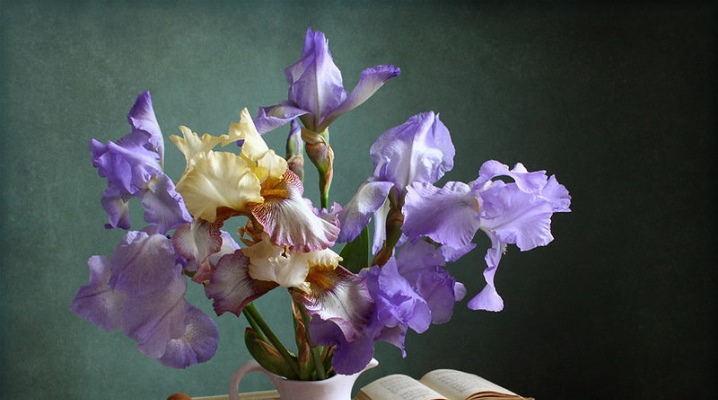
Iris is the finishing touch in many bouquets. But even a mono-bouquet of such flowers will be a wonderful, graceful, delicate gift and a sign of attention. Iris is also known under a different name - iris. And you can also hear how the same flower is called a cockerel.

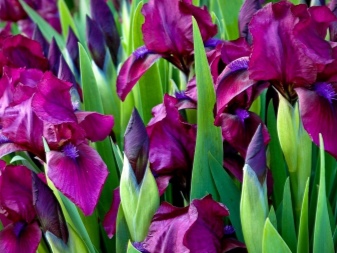
Description
Iris is a perennial plant that belongs to the iris family. They grow in many countries. The genus alone contains about 700 plant species. A its name translates as "rainbow", once Herodotus himself gave such a name to the flower in honor of the rainbow goddess Iris... By the way, the famous Florence also owes its name to irises - the Romans admired the abundance of beautiful flowers that literally covered the fields near the city, and therefore gave it this name (“Florence” means “blooming”).
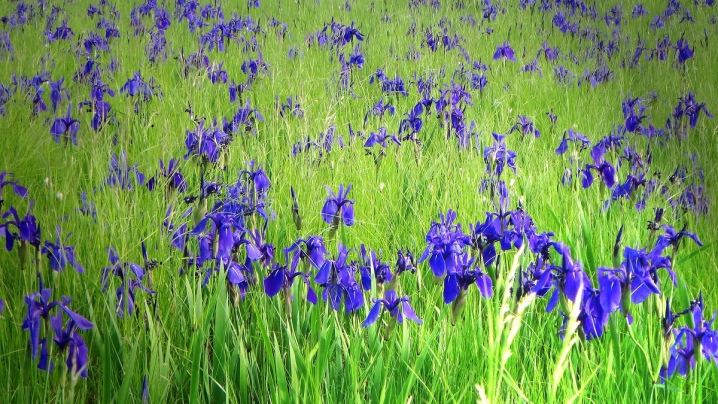
For at least 2000 years, this plant has been cultivated by people on the planet. Time passes, but iris is still popular: it can decorate any garden, as it looks beautiful both in a modest flower bed and in a lush flower garden.
Briefly about the structure of the plant:
- filiform or cord-like roots grow on the rhizome;
- there may be one annual peduncle, but there are also several of them;
- the leaves of the iris are thin, two-row, have a xiphoid shape, linear ones are rarely observed;
- there is a thin waxy layer on the surface of the leaves;
- flowers are usually single, but inflorescences can also be found;
- flowers are fragrant, large, of an unusual shape;
- the flower has 6 petals, they are also the perianth lobes;
- the outer lobes (and there are 3 of them) are slightly inverted from below, they differ in color from the upper lobes, and the upper ones that are fused are similar to a tube;
- iris blooms from May to July, 2 or 3 flowers can bloom at once, which do not fade for about 5 days;
- the fruit is a three-celled capsule.
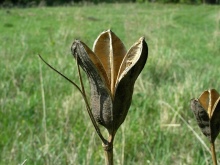
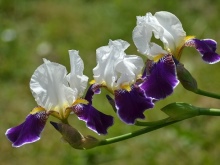
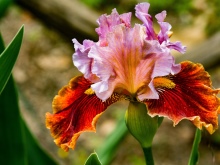
How to choose?
Many parts of the plant, including the roots of the iris, have long been used even in medicine. This plant was once considered a powerful aphrodisiac. Iris powder was eaten to increase libido. And the scent of the flower was so pleasant and strong that it really increased the passion of a person.
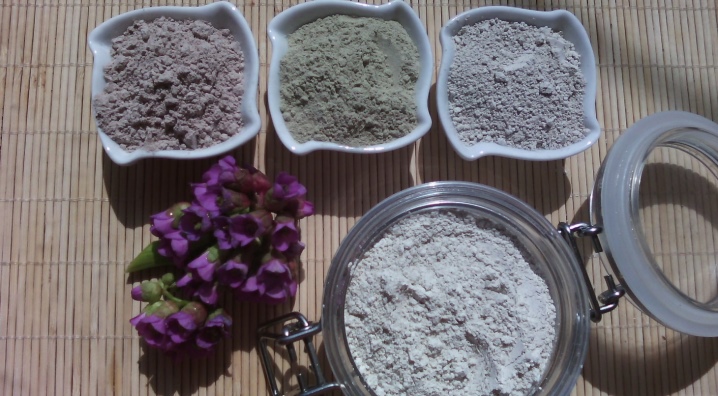
Views
Irises are divided into types for a reason. There is an international classification according to which 15 garden classes of irises can be distinguished.
In this list:
- tall bearded;
- bearded border;
- intermedia bearded;
- miniature tall beards;
- standard dwarf bearded;
- miniature dwarf bearded;
- aryls;
- Japanese;
- arylbreds (not the same as aryls);
- spuria;
- Siberian;
- Louisiana;
- Californian;
- species hybrids;
- interspecific hybrids.
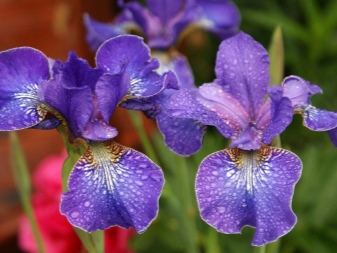
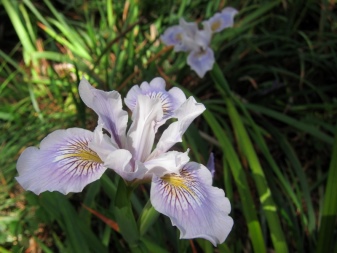

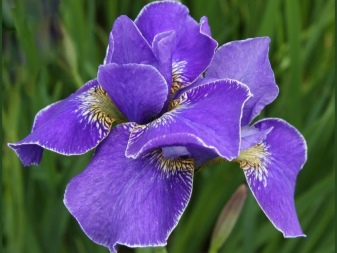
Bearded irises are of three types and differ in the height of the peduncle - dwarf, medium-sized and tall. Dwarf ones barely grow up to 40 cm, medium-sized ones - up to 70, and tall ones are all other bearded irises that have grown above 70 cm.
It should be noted that the taxonomy of plants such as irises is not unified. This can be associated with the ongoing changes in the plant environment, and with the disagreements of domestic and foreign scientists.
Russian experts adhere to the classification of Rodionenko, who excluded bulbous and corms from the iris genus. Western scientists rely on the classification of Matthew, who assures that 262 species belong to the genus, and bulbous and corms are also included here. And there is also the classification of irises in The Plant List, which includes 362 species.
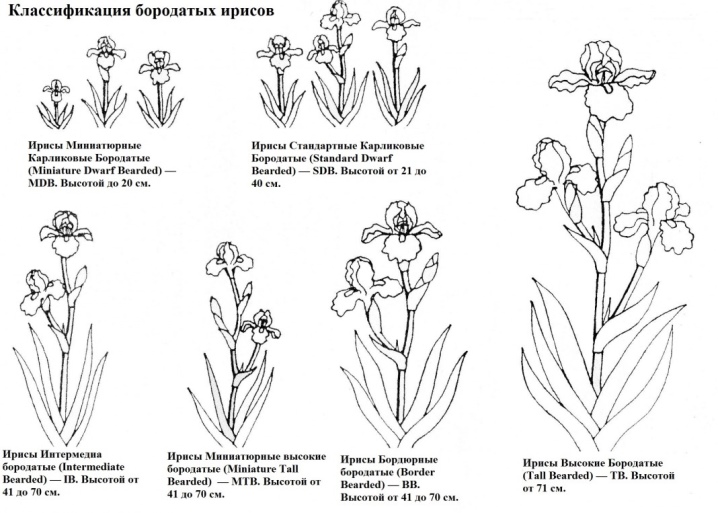
Some types of irises:
- leafless - perennial iris with a short rhizome, another name is forked;
- smooth - otherwise called smoothed iris;
- thin-leaved - grows in sands and deserts (sometimes called narrow-leaved);
- wild - the seeds of these cockerels are spread by water;
- salt-loving - grows in river floodplains and flooded meadows;
- remontant - re-flowering, that is, flowering cockerels twice per season;
- steppe, field, forest - the names are given according to the territory of distribution of the iris.
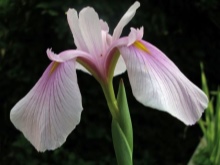
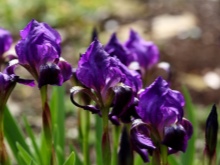
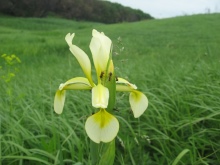
The flower has high decorative qualities, and this herbaceous perennial is even considered an anti-vandal plant - it is so good in a flower bed that almost no one rises to pick it and steal it.
Both small and large bush flowers, familiar and hybrid species are beautiful, capable of captivating any florist in earnest.
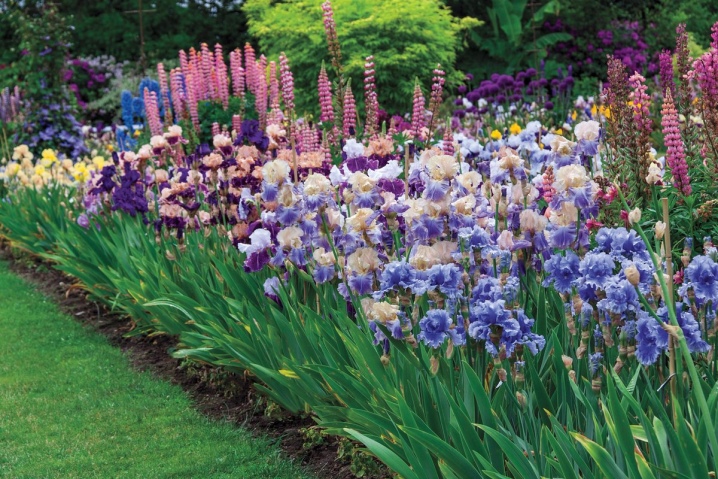
Colors
The color of irises is designated by special terms that may seem unusual to many. The color of the plant is determined by two groups of pigments - anthocyanins (responsible for violet-red, blue, lavender, purple), as well as carotenoids (responsible for pink, orange and yellow).
The terms used to denote the color of the cockerels:
- monochromatic - the range of flowers is varied, but the iris are painted in one color;
- two-tone or two-color - standards and fouls are painted in different colors;
- amena - the iris has white standards;
- variegata - his standards are yellow, and his fouls are dark red;
- neglect - lavender standards combined with dark purple fouls;
- glaciate - coloring without anthocyanin pigments;
- luminata - there is a light stripe around the beard on dark-colored fouls;
- iridescent - this color is characterized by smooth transitions from one tone to another;
- plikata - a light background has a dotted or dashed (striped) pattern of a darker color (such cockerels are said to be variegated);
- reverse - two-ton irises with standards that are darker than fouls;
- the broken color is a randomly colored multi-colored cockerel.

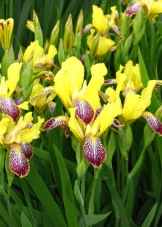
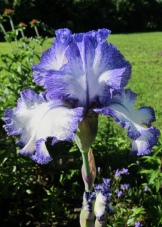
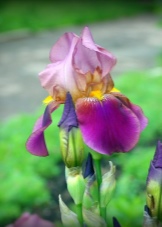
It may seem to the uninformed that there is still nothing more beautiful than lilac irises, but this is the opinion of an ignorant person. The killer whale has dozens of interesting color variations, and each gardener is tied to his own color option.
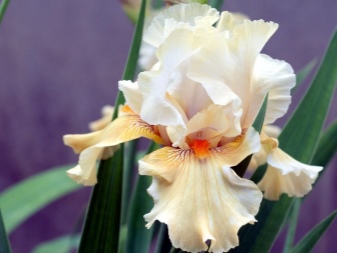
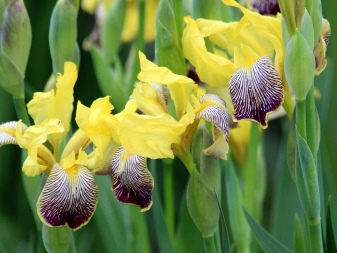
Varieties
For literally hours, lovers of strolling through the botanical garden can enjoy colorful irises, photograph them and imagine their own garden plot in this floral splendor. And choosing iris varieties is a separate pleasure. Even the way they are called is already a delight for those who are fond of botany in practice.
- Victoria Falls. Behind such a romantic name lies a classic variety that shows how beautiful a flower can look, in which water and heavenly elements converge. The wavy border of the flower gives rise to even greater associations with water cascades.
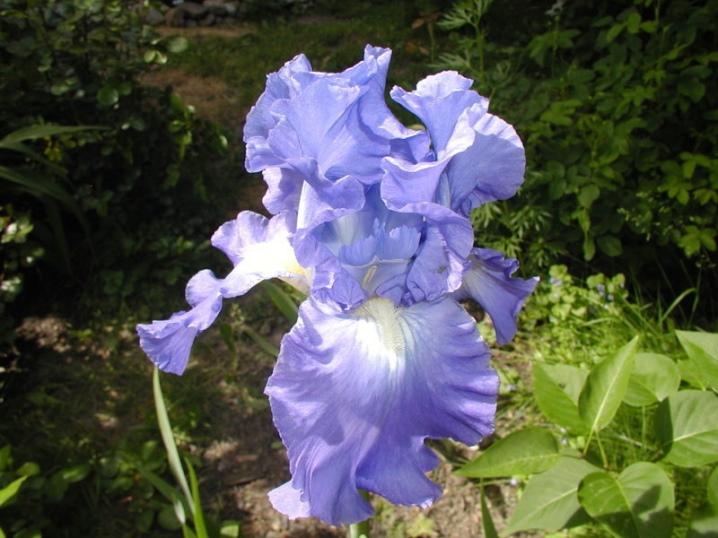
- "Wine and Roses". Irises are very beautiful, they make a chic mono-bouquet. They resemble ruby wine in a glass, as well as the tenderness of pink roses.
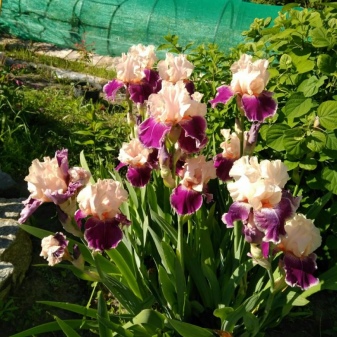
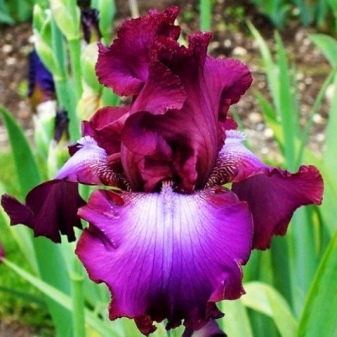
- Royal Opal. Purple lush Siberian irises. They do not look modest in a flower bed, they know how to attract attention.
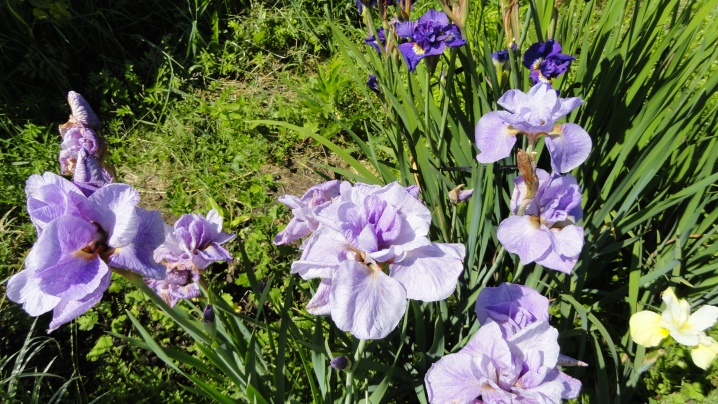
- "The Cherry Orchard". A beautiful Chekhov name for graceful dwarf cockerels. The flowers have expressive cherry-colored petals with a sapphire beard.

- "Flamenco". A colorful, bright, cheerful flower. On the lower petals there is an expressive terracotta border, giving rise to associations with passionate Spanish dance.
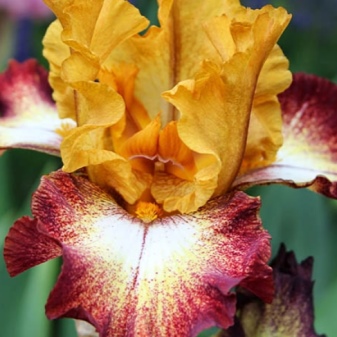

- "Pink Ice". The flower belongs to the subspecies of the xiphoid irises, it looks noble and gentle.On a hot day, cut flowers in a crystal vase will bring charming coolness to your home.
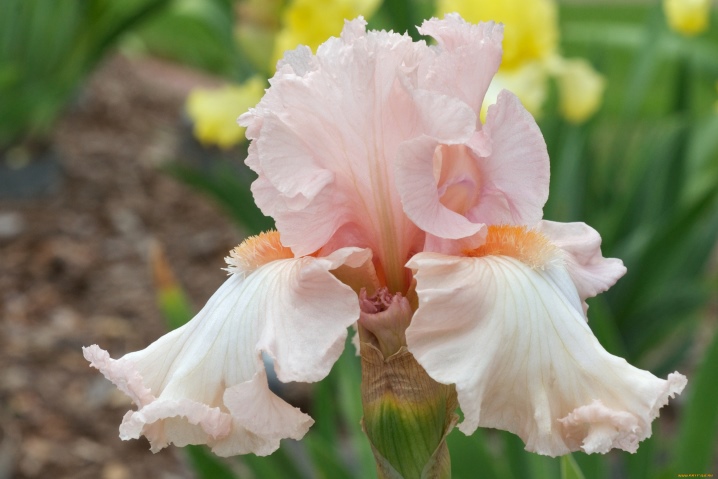
- "Black dragon". A variety with a special charm. It has a rich, deep color and mystical associations that cause its inky purple tones. Because of them, the flower is perceived literally as black.
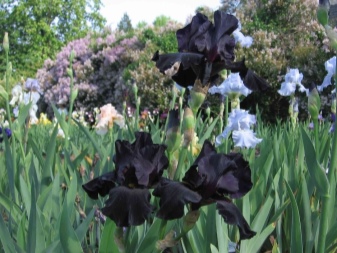
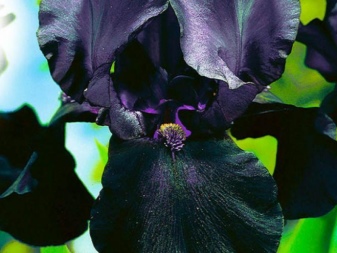
- "Lady Vanessa". There is a gorgeous range of purple hues that are very close to lavender color. The edges of the flowers are slightly corrugated, on the lower petals there is a white patterned trace.
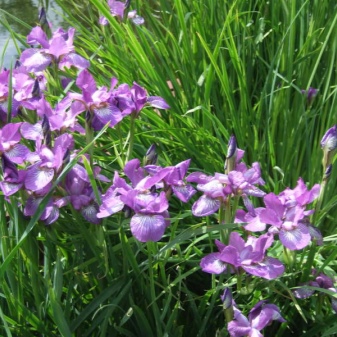

- "Sunset at Avalon". The sun-orange petals remind the beholder that somewhere on earth there are especially beautiful sunsets, hot and romantic.
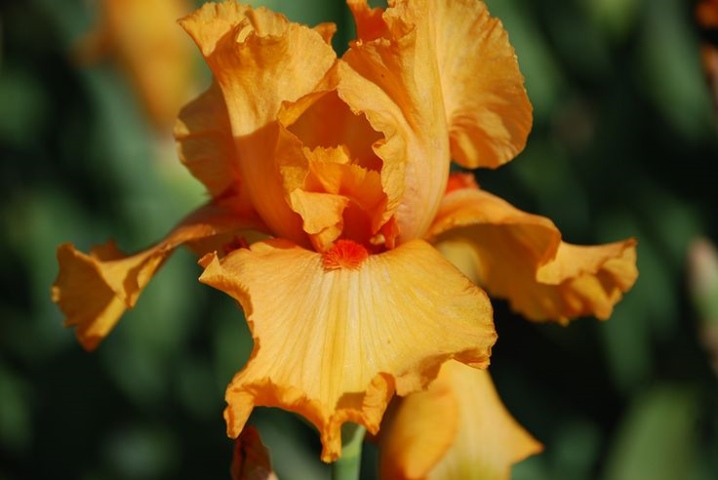
- "Amsterdam". These dwarf bearded bettas are perfect for framing borders. They look really aristocratic.
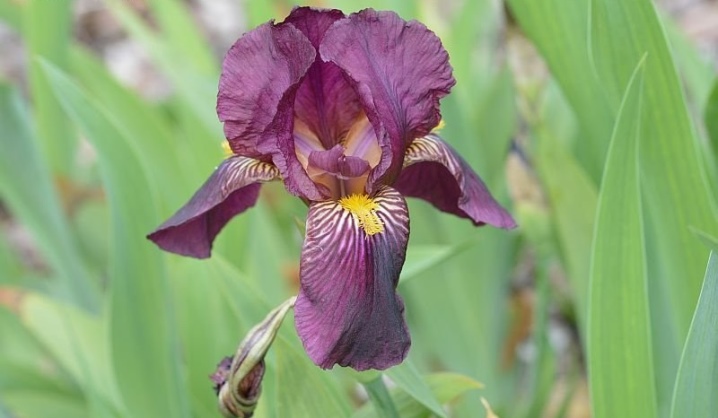
And this list can be continued for a very long time, because there are a lot of varieties of irises, and arguing about which is better, more beautiful, more spectacular is an even longer occupation.
Iridarium - this is the name of the iris garden, and if you decide to use this idea to decorate the site, think about which varieties and colors will look most advantageous in your flower beds.
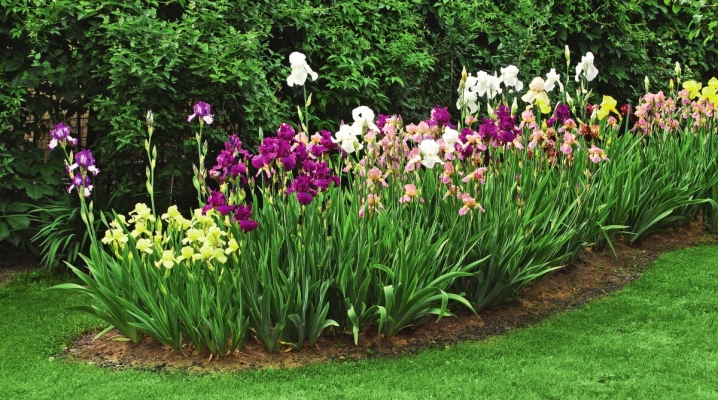
But it's not just aesthetics. Outdoor irises must be suitable for the climatic conditions. To do this, you need to know a thing or two about them.
- Nurseries, garden centers, specialty shops, collectors are all reliable suppliers of irises. Sellers on the market can no longer be perceived so reliably, unless the fact of personal acquaintance, as well as a good reputation, strengthens their confidence.
- Japanese, Siberian and bearded cockerels can be bought in early spring (when the plants are dormant), or at the very end of summer and early fall. If you buy bearded irises in the summer, try to get flowers with 3-5 leaves.
- If you buy bearded irises in spring, be sure to assess the condition of the rhizome: it should be dense, strong, elastic, without soft spots. If there is a characteristic putrid smell, then the plant is sick.
- If you buy Siberian and Japanese irises in packages, then the condition of the plants also needs to be impartially assessed - they should not give the impression of dried up plants, their roots should be moist, and there must be one or more “awakened” sprouts.
- If the bettas were bought in February-April, you do not need to plant flowers in a pot, it is better to keep them until planting in open ground in the cellar or in the refrigerator. But from time to time, inspect the plants, do not forget to moisturize the root system.


Of course, it should be understood that the decorative qualities of a plant in a flower garden and a vase may be different. In a vase, almost all types of irises look perfect, but in a flower garden, with the wrong neighborhood, they can get lost.
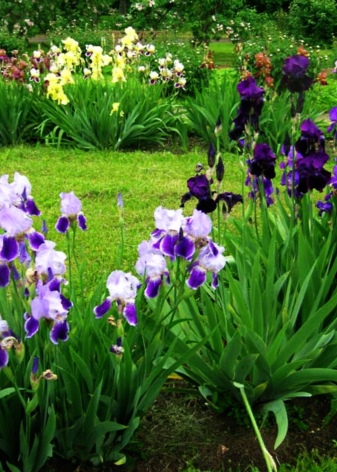
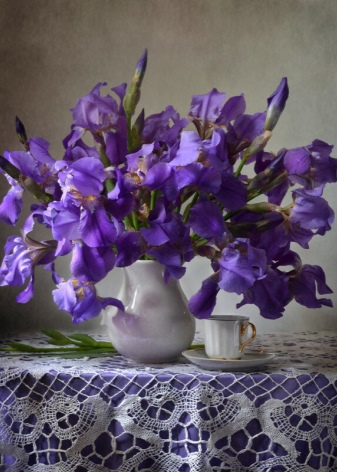
Therefore, it is better to plant irises on a separate site and, of course, in a suitable place for this.
Seat selection
Experts and experienced florists alike agreed that irises should not be planted throughout the garden for optimal care. A special ridge, flower bed or row is more suitable for raising cockerels both from a practical and aesthetic point of view. The best place for irises would be a sunny area, because there are much less shade-loving irises than sun-loving and heat-loving ones.
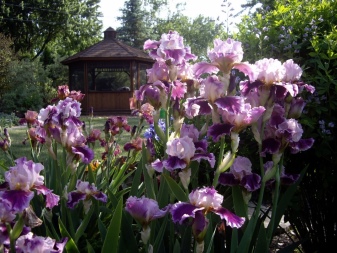
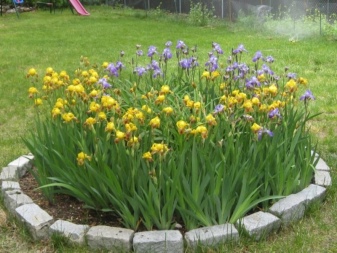
Also, before planting irises, you need to make sure that:
- the groundwater level at the site is not very high (if the groundwater is close to the soil surface, a drainage layer should be made or simply add soil);
- the soil itself is neutral or slightly acidic;
- the site is protected from the winds, but if this is an impossible condition, later the males will have to be tied up.
Bulbous irises, under certain conditions, can be planted in the ground in the spring. The main thing is that the soil warms up to at least 10 degrees Celsius.
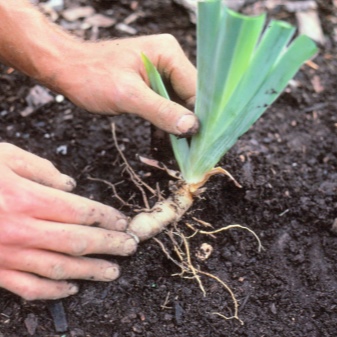
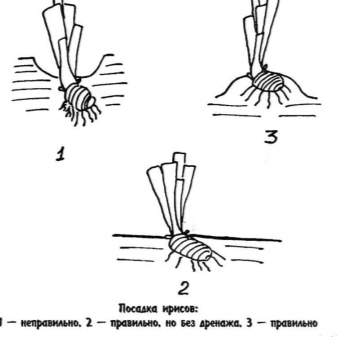
Cockerels can bloom in June, but more often they still delight with flowering next year. In the first year after the spring planting, their flowering is weak or absent.
Landing
A responsible and important moment, which largely determines whether the cockerels will delight you with impeccable flowering or disappoint. If the planting is not correct, the plant will be excessively buried roots in the ground, and this interferes with the normal development of the flower and even fraught with its death.
Correct planting of rhizome iris species.
- Dig a hole, in the center of which form a small earthen mound.
- The central root should be laid out on this mound, the lateral roots should be distributed along the edges of the hole. The rhizome should actually be level with the ground.
- Sprinkle the side roots with soil and compact, cover the central root with sand with a layer of no more than 2 cm.
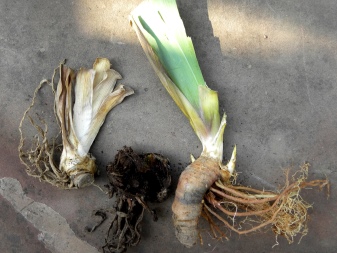

Correct planting of bulbous iris species.
- Make a hole, plant an onion in it, its bottom will be at the bottom.
- Cover the onion with soil. Please note that the optimal planting depth for the cockerel is 3 diameters of the bulb itself. This is about 10 cm. If the bulb is placed close to the surface of the earth, it will freeze in winter (this applies primarily to thermophilic varieties). The deeper the bulb is placed, the more likely it is to germinate successfully.
- The spacing between the bulbs when planting is 10 cm.
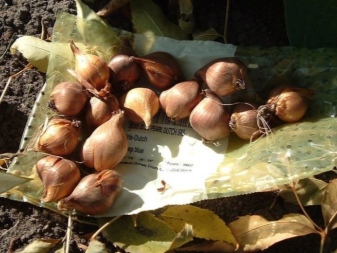
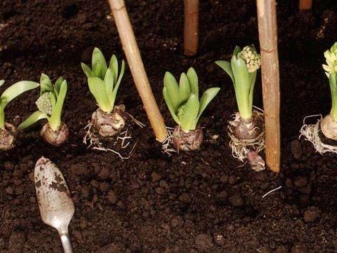
If the cockerels were planted in the summer or autumn, then expect flowering in the spring of next year. If the planting is done in spring, then flowering can begin only after a year, but summer flowering is not excluded (but it can be very scarce).
Growing iris, as you might guess, can be done from seeds. Sowing them can be organized in September as well as in March. But the September sowing is fraught with such risks: frosts will come late, when the seeds have already had time to germinate. The seedling in such cases, alas, freezes.
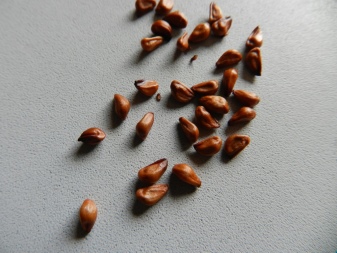
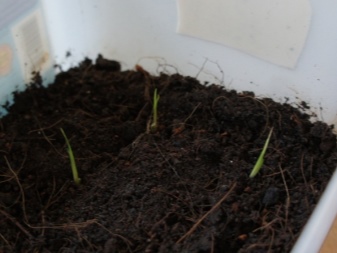
However, you can store seeds until March. They should be hidden in a damp cloth, which should be placed in a container that should be kept under the freezer. After a month, the container is transferred to a warm place (just not hot). And when the seeds hatch, they are moved into light soil and planted with the indispensable supplementary lighting. In May, killer whales are transplanted into open ground.
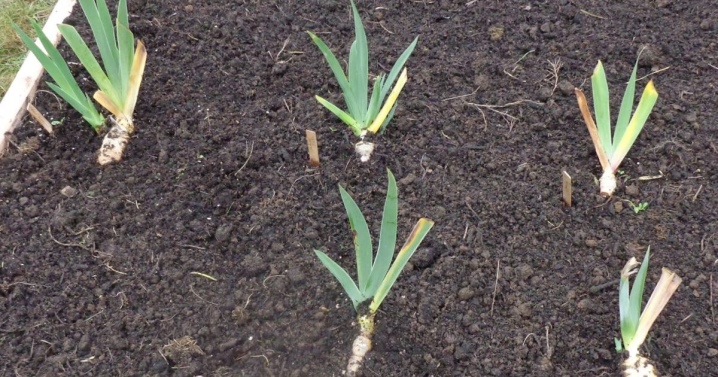
Care rules
Rhizome irises are completely unassuming - both experienced flower growers and beginners will like to take care of them. After planting, you should delicately and exclusively by hand pull out the weeds, but this is a familiar and far from the most time-consuming practice. When the plant has already grown, neither weeding nor loosening is actually required for it.
Growing healthy, beautiful males outdoors involves:
- watering every day in summer, if the weather is dry, if normal - you can water the cockerels no more than three times a week;
- when watering, control of moisture ingress is needed - it should not get on the flowers themselves;
- so that the wind does not break the tall stems, the cockerels need a garter to the supports;
- bulbous plant varieties require the removal of old, unusable leaves and the indispensable cutting of peduncles after flowering;
- it is difficult to grow iris without feeding, it is important to apply fertilizer in the spring, on the days of budding, within a month after the cockerels have faded.
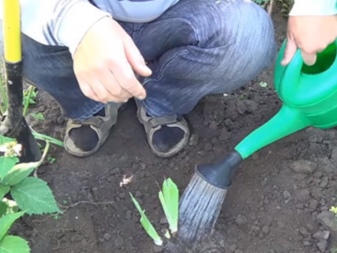
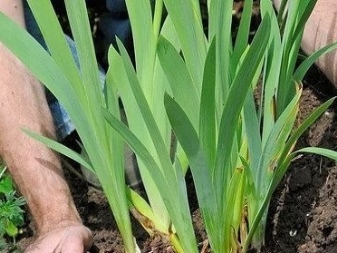
After the end of the flowering of killer whales, it is important to cover them for the winter, fertilize them with mineral fertilizing, cut off the stems and peduncles.
The monthly irises care scheme also looks convenient:
- April. You need to inspect the plantings, remove the foliage, loosen the ground and turn the shelter (but you don't need to remove it). It is possible to remove the cockerels from the winter shelter only when there is definitely no threat of frost return. The first feeding with nitrogen compounds takes place. You can also make processing with a weak manganese solution.
- May. At this time, dwarf varieties of cockerels bloom. They need fertilizing with phosphorus-potassium fertilizers. Faded inflorescences should be gently broken off. In dry weather, care is impossible without watering. After each watering in the spring, it is imperative to loosen the soil.Do not forget about weeding before the flowers have grown, because Iris whales do not tolerate competition and love clean soil.
- June. Mass flowering of cockerels begins. It is necessary to carry out a second planned feeding. Timeliness requires the removal of faded flowers. The flowering shoots on the cockerels planted last year should be cut off for the plant to develop well.
- July. Best month for transplanting and breeding males. You can plant it in another month, but if you do it in the fall, then only in the first half of September. More precisely, do not plant, but transplant the bush to another place. It is still worth planting in July.
- August. The third feeding should be at this time, since at this stage the green mass of irises grows intensively, flower buds are laid for the next season. Repaired varieties bloom again at this time.
- September. At the beginning of autumn, there may already be the first frosts, after which the leaves of the irises will turn yellow. They need to be removed quickly. All transplants have been stopped since mid-September. At the end of the month, the flowers need the last weeding for the season, after which it is no longer necessary to disturb the flowers, their roots. The iridarium should also not be watered from mid-September.
- October. It remains only to prepare the cockerels for winter. Cut the foliage in the form of a cone, do not leave it in the garden for the winter.

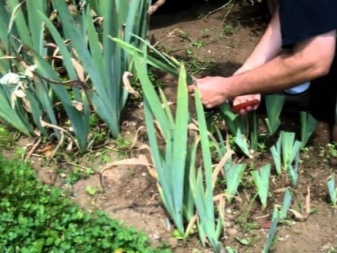
Beginning iris growers are also worried about whether or not iris can be pollinated. Cross-pollination by insects is not excluded, but the result can only be seen after sowing the seeds.
Irises do not reproduce by self-seeding, therefore the independent appearance of flowers is simply impossible.
Preparing for winter
Young specimens of cockerels certainly need to be sheltered for the winter. Heat-loving varieties of iris should also be protected from the cold. The easiest way to do this is with dry foliage or spruce branches. But if you see that bulbous cockerels are freezing out (and this is typical for certain varieties), then it is worth digging them up for the winter. Only do this after the leaves are completely dry.
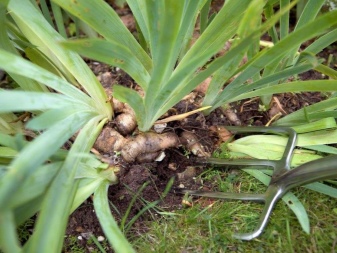
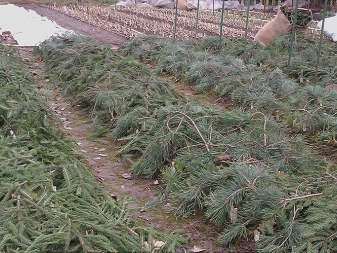
Cut the bulbs and treat them with insecticides. Then they are dried for a month at a temperature of about 25 degrees. The bulbs are then stored in a dry but cool place. In the spring, irises are characterized by early awakening: at this time they steadily endure temperature drops, therefore, as soon as the snow melted, the shelter is removed from them.
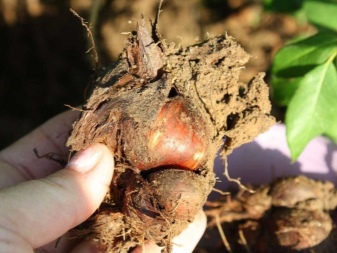
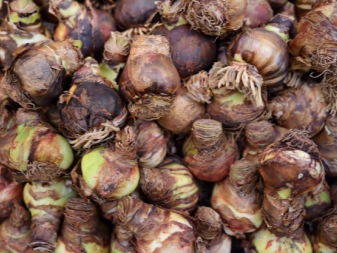
If some of the cockerels are frozen, they need resuscitation. All the resulting liquid of the dead leaves must be cleaned out to a hard tissue. The leaf cut should be treated with a manganese solution, the wounds can be sprinkled with crushed coal (or plain ash).
How to propagate?
For reproduction, you need a clean knife, water, brilliant green or crushed coal, as well as a nutritious substrate. Bearded and beardless iris reproduce by dividing the rhizome. This is necessary for plants that are already 3-4 years old. It's good if you can do it in July.
Reproduction takes place like this.
- Dig out the bush, gently shake it off the ground, rinse in clean water. The rhizome can be broken into pieces for planting by hand or cut with a knife. A fan of leaves or 2-3 buds should remain on each part. Leaves are cut by 2/3, roots are shortened.
- Slices are sprinkled with charcoal or treated with brilliant green. Delenki can immediately be planted in nutrient soil. But you can wait with planting, because the rhizomes tolerate drying well (there are several days in stock).
- But if the rhizomes nevertheless dry up or become flabby, then for half an hour they should be immersed in the Epin solution, and then immediately planted in a moistened nutrient soil.
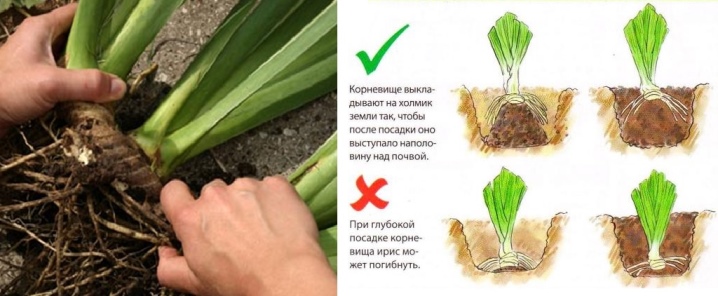
Bulbous irises, by their very appearance, suggest that they are ready for transplantation. A heavily overgrown curtain with several peduncles suggests that it can be cut into pieces. The bush is dug out after flowering. But you can propagate iris without even digging out the bush completely.When the flower grows, the bulbs and rhizomes themselves appear on the surface. This "peeking" part can be used as planting material, while the roots of the mother liquor should be sprinkled with a nutrient composition.
From seeds, only flower growers who are engaged in breeding propagate iris. They collect ripe seeds immediately after flowering. Seeds are formed in capsule fruits. Seeds are sown in open soil in spring or late autumn.
See below for more details.
Diseases and pests
The infection enters the roots of flowers through various kinds of damage. They can either be applied by insects or remain as a result of cuts with gardening tools. At low temperatures, very deep planting, clay soil or poorly nutritious soil, with a thickened planting, a deficiency of phosphorus and potassium, the plant is most likely to get sick.
What threatens irises?
- Bacteriosis The disease develops due to very frequent moistening of the earth, its oversaturation with organic matter (it is better to under-feed the iris rather than overfeed it) and thickening of the plantings. As soon as the florist forgot about the rules of care, the disease of the flower is right there. If the rhizomes of irises have become soft, the roots have literally turned into gruel or a "fan" falls off the foliage, these are sure signs of bacteriosis. It is not yet possible to cure this ailment. Plants should be separated from healthy rhizomes and burned. And in order to warn the killer whales against bacteriosis, the plant needs preventive treatment with a solution of urea and 12% sulfur.

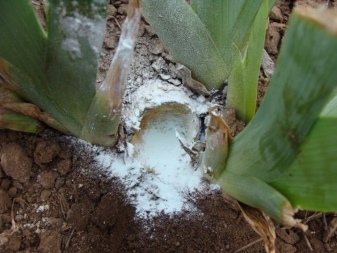
- Wet rot. The bacterium that causes this disease appears in the soil from the manure. The leaves of irises turn brown and dry with this ailment.
So that the killer whales do not get sick with wet rot, then on the eve of planting they are treated in a solution of potassium permanganate.
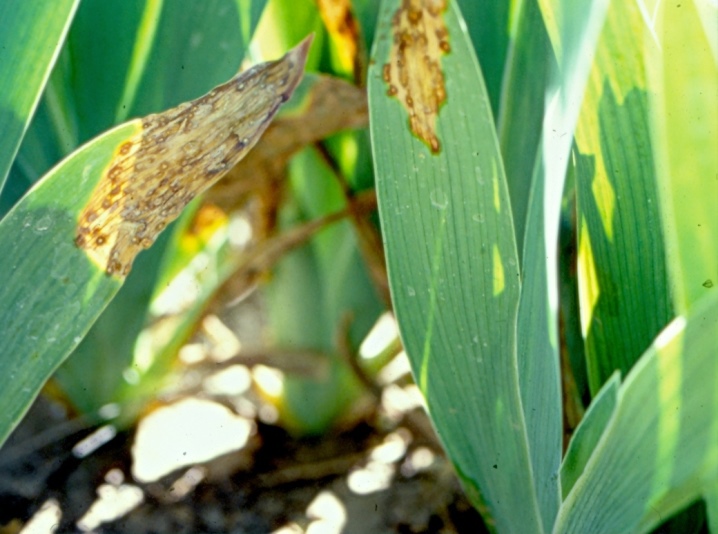
- Fusarium (gray rot). The foliage of the irises and their roots suffer from this scourge. A characteristic gray bloom appears on the leaves, which leads to leaf rot. Dry rot damages the roots, and this happens due to the excessive nitrogen content in the soil. Even before planting, the cockerels need to be treated with copper sulfate, and the processing of garden tools will not hurt either.
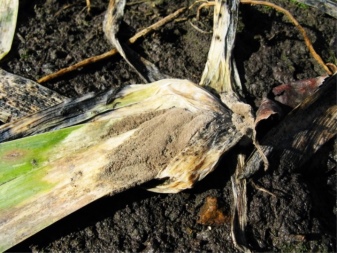

- Heterosporia. This is the name of another fungal leaf disease. Gray-white spots on the leaves gradually affect the entire bush. You can only prevent the development of the disease by spraying the cockerels with fungicides, without oversaturation of the soil with potassium and phosphorus. As soon as the disease manifests itself, do not wait for the leaves to rot and begin to fall to the ground, and the buds will dry behind them, cut them off and burn them. Spray the plant every 7-9 days. Better to do it after rain.

- Of the pests, it is worth noting the nematode... These are small translucent worms that are not even afraid of frost. They can settle at the base of the plant, in its buds, and as soon as heat comes in, the nematodes are activated. They pierce the top layer of the leaf with their proboscis, drink the cell juice, after which the leaf turns brown and dies off. If you systematically weed weeds with equipment treated in formalin solution, you can protect the irises from pests.
It is impossible not to mention the especially insidious aphids. This pest accumulates in the buds of irises, literally sucking life out of the flower. Aphids multiply quickly, which is fraught with the rapid death of the plant. Therefore, be sure, noticing the first damage, treat the irises with karbofos emulsion and phosphamide. Only damaged flowers can be processed.

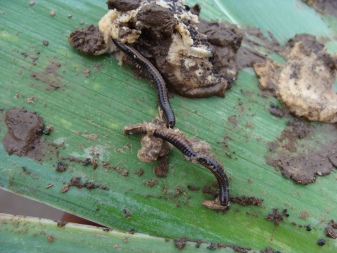
Possible problems
Let's consider a few more common problems, faced by gardeners when growing irises.
- The buds of irises do not bloom. There are several reasons for this. Maybe they simply do not have enough food. First, make sure that the feeding system is not disturbed. But it could also be that the flower buds of the cockerels froze over the winter. Irises are not blossoming also because their rhizomes grow too much. Finally, it's worth checking for pests.The fact that the irises did not bloom may be due to unfavorable weather.
- The peduncle falls. This may be due to excessive watering, very deep planting of rhizomes, crowding in the flower bed.
- The flowers have dried up. Probably, the point is just inadequate watering in hot weather. If the flowers have dried up, wilted, most likely, you let them run and forgot that they are watered every day in a drought.
- And one more strange situation - the iris changed color. This is rare, but due to any stress suffered, irises can theoretically return to their wild forms. And this can be manifested precisely by a change in color.
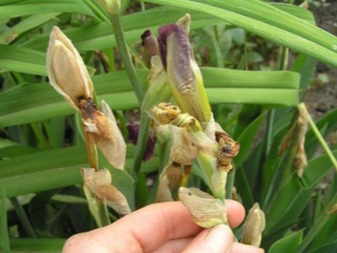
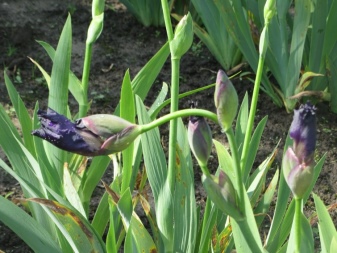
Beautiful examples in landscape design
The simplest and safest option is to break a monoclumba from your favorite iris varieties. But if you are going to combine irises with other flowers, the neighborhood needs to be thought out. Combines on a flower bed irises with poppies, lilies, lupines, barberries, phlox, currants. The ideal combination with other flowers determines the planting pattern: a good neighborhood will be with gooseberries, thuja, forsythia. "Make friends" iris with peas and juniper.
10 examples of iris in landscape design
- A wonderful iridarium where not only a cat can walk. There will be enough flowers for admiring during a walk, and for cutting. But bouquets of irises are incomparable.
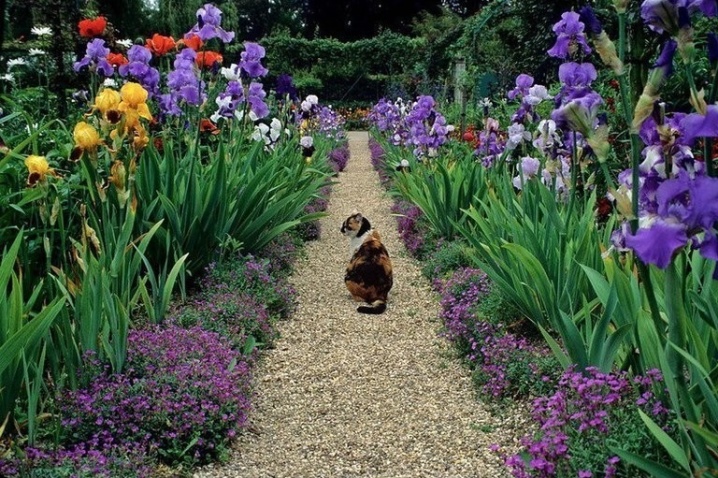
- Iris planted near the pond look beautiful. They add romance to this site.
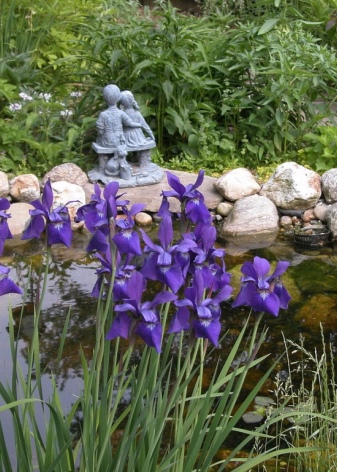
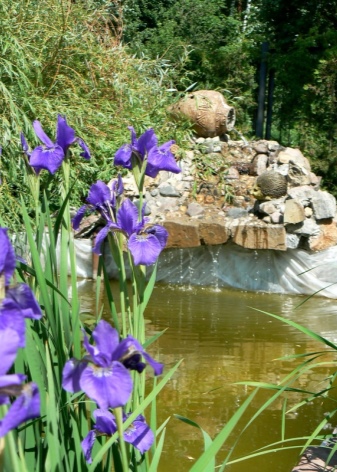
- A sample of how irises and lupins can be combined. There is something in common in these plants, and they demonstrate this both on the site and in the bouquet.

- The iris blooming along the path takes you on a journey. For a similar route, you really need to look for tall flowers, and irises do a great job with this.
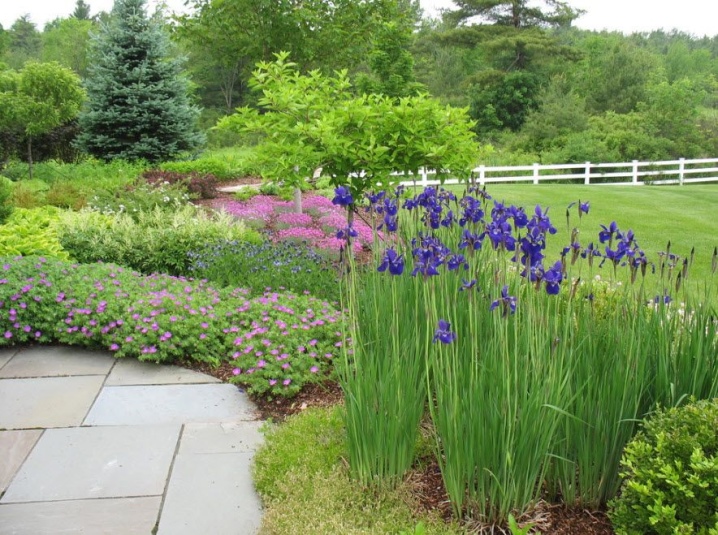
- If you plant irises of different colors along the fence, this place will delight both the owners and bystanders. And here you get the best photos for social networks.
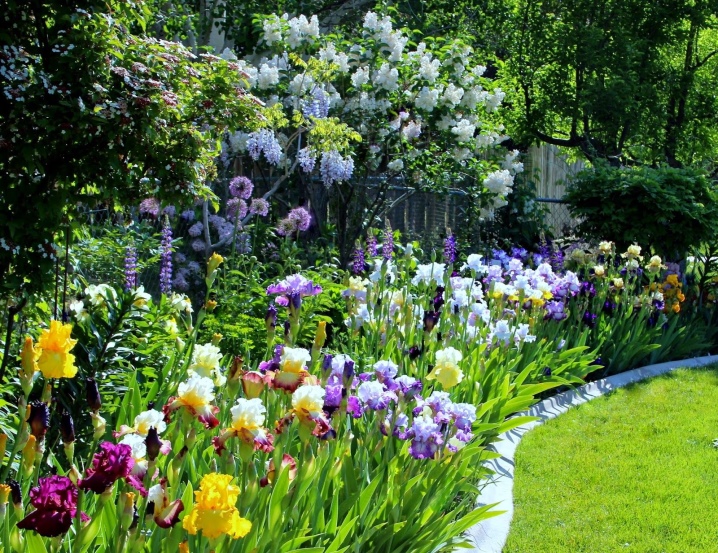
- This design option is also interesting, especially if you like to change the appearance of the site from season to season. Any color is possible. It is good if it overlaps with some dominant shade in the decoration of the house.
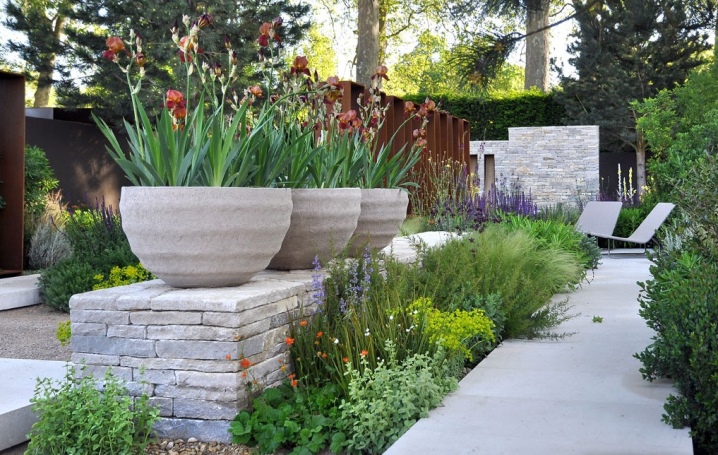
- The irises leading to the cozy gazebo look so cute that I want to take a brush and capture them on canvas. On one side of the path, you can plant iris of one color, and on the other, place completely different shades.
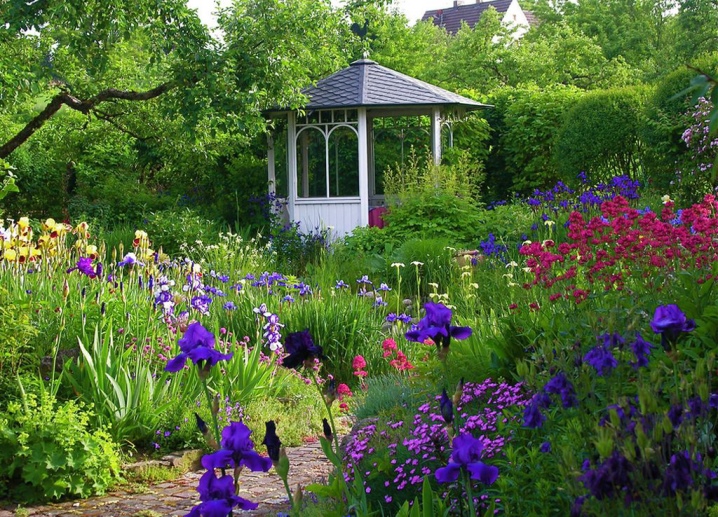
- And this version is also very beautiful, lyrical, laconic. It's nice to drink mint tea right here in the morning with your legs dangling into the water.
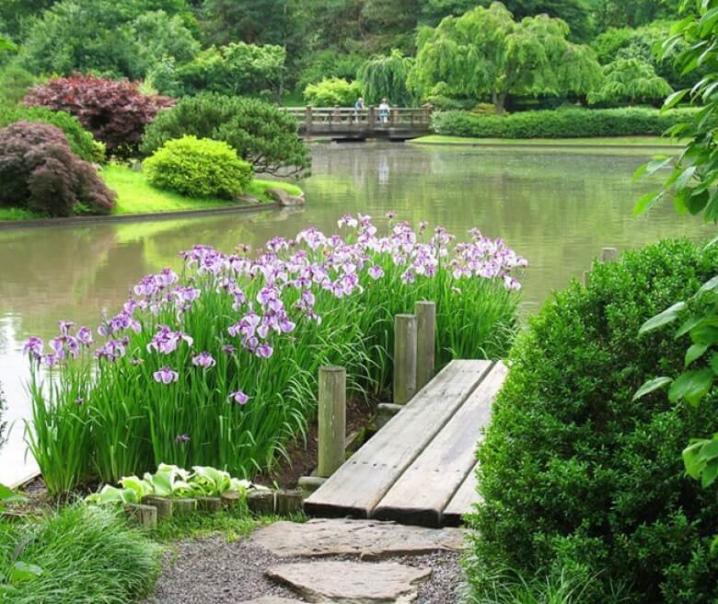
- Bright iris next to white peonies look gallant and elegant.
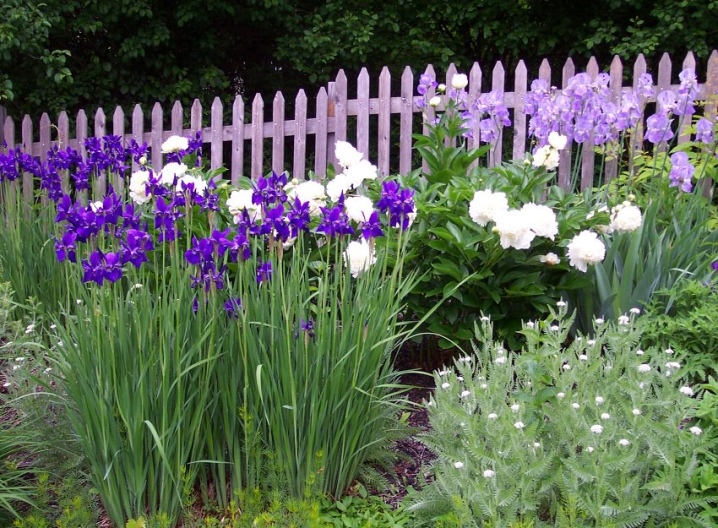
- Nice path along the fence - very bright, juicy, "tasty". It is a pleasure to have picnics nearby.
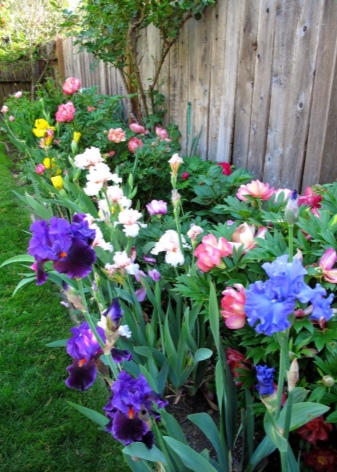
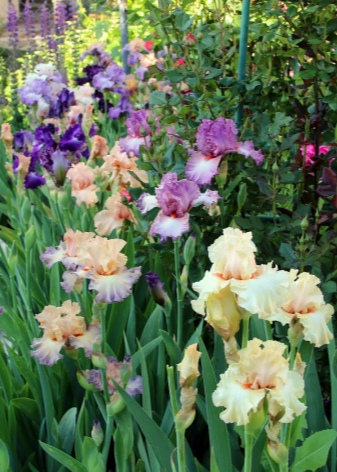
And to top it off, a few photos proving that cut irises make the interior even more elegant, cheerful, add elegance and color to everyday life. All this pleasure is worth the trouble, but a beautiful iridarium will be the best reward for a florist.
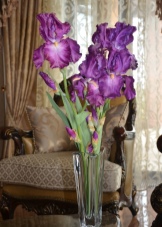

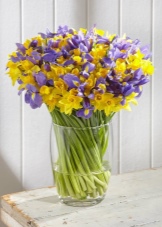
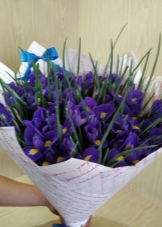







































































































The comment was sent successfully.